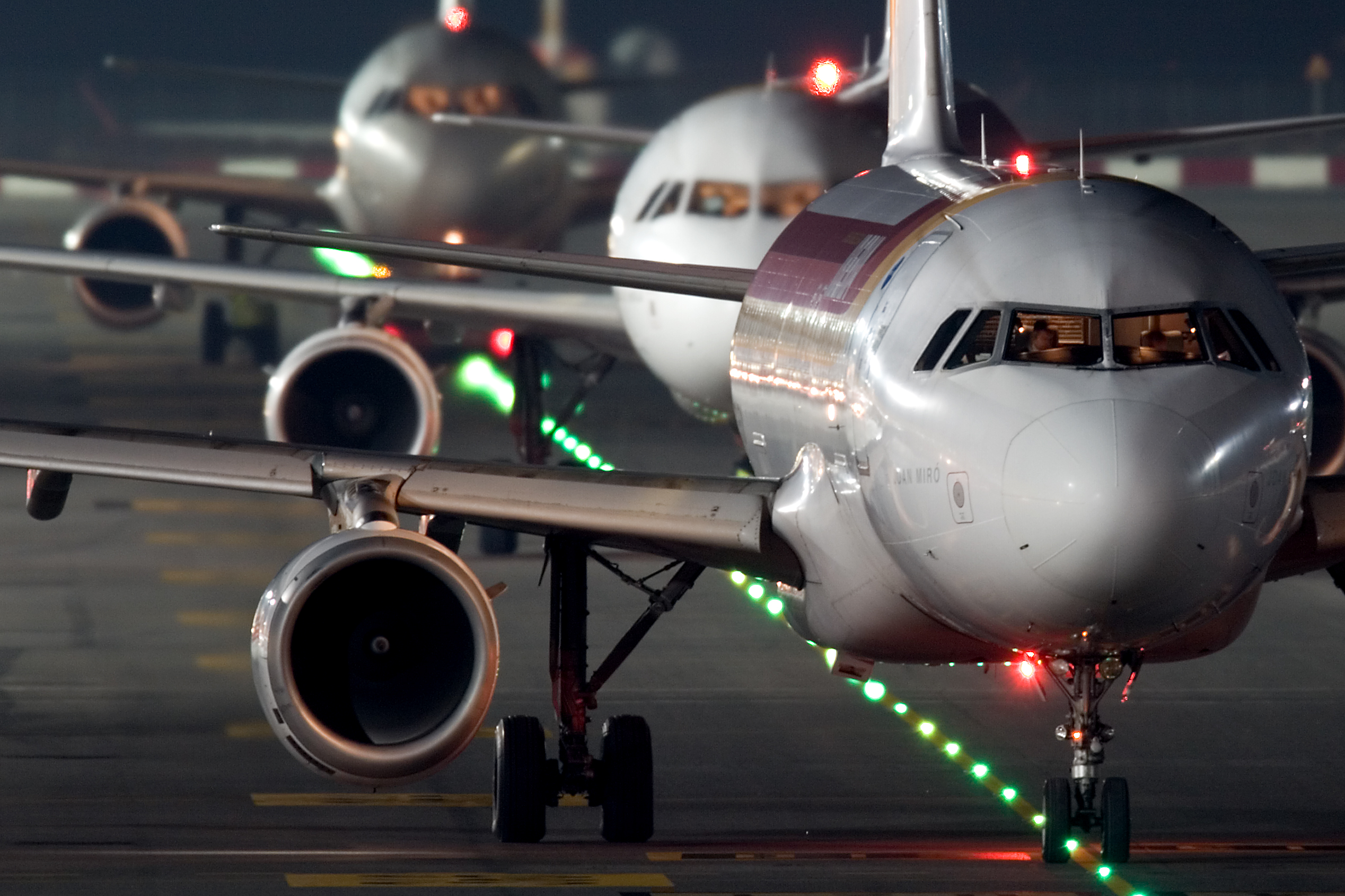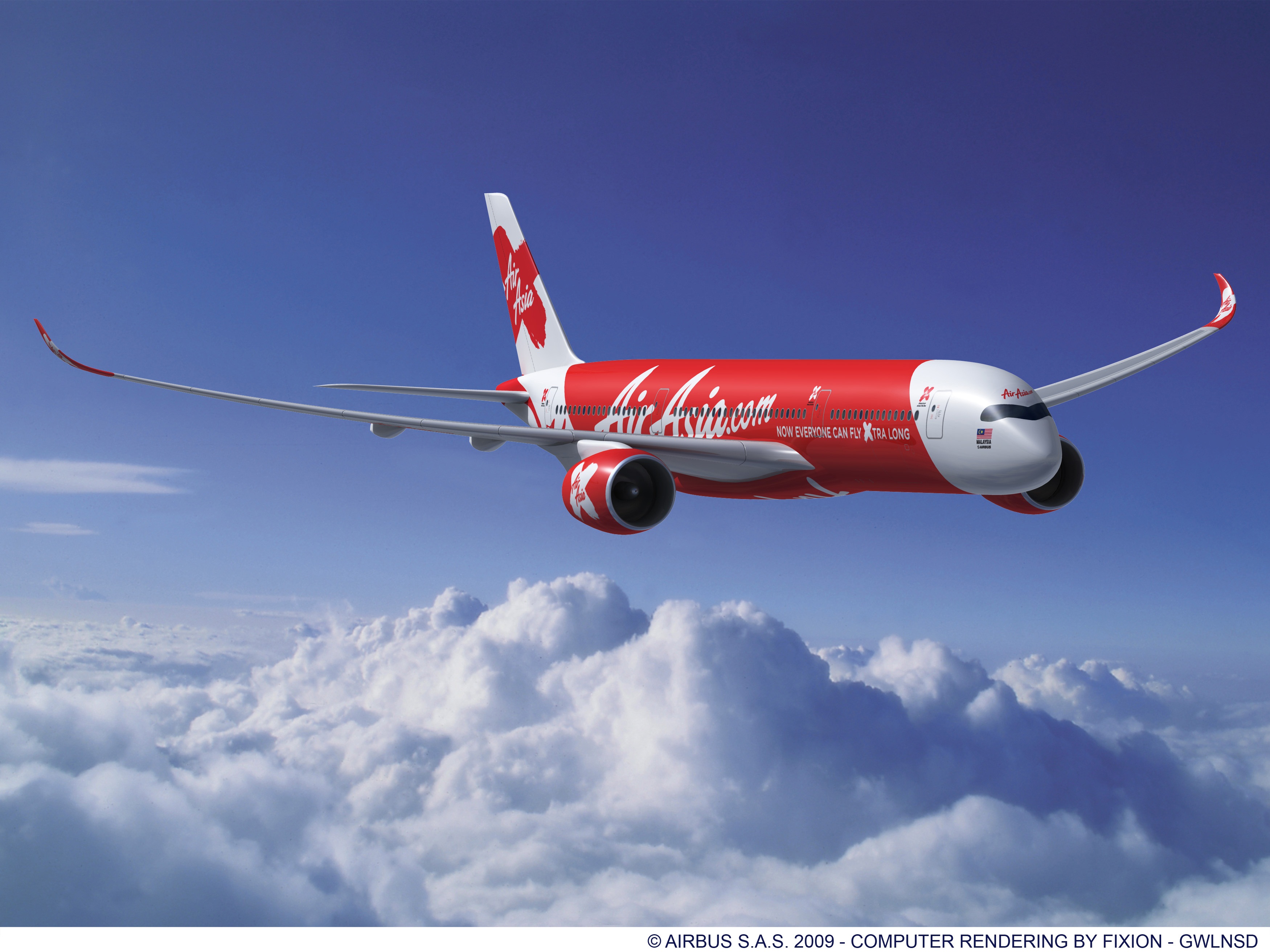Articles
| Name | Author | |
|---|---|---|
| The ‘Digital Aircraft’ – heralding a new generation of aircraft operations | Mario Sabourin, Sr. Product Manager, EFB, SITA | View article |
| Alternative Training Qualification Programme (ATQP) | Captain Mark Linney, Co-founder and Director, Evoke Systems Limited | View article |
| Column The World according to IT: Are business cases stifling innovation? | Paul Saunders | View article |
| iPad: Managing a Digital Environment | Niall O’Sullivan, CEO, Arconics | View article |
The ‘Digital Aircraft’ – heralding a new generation of aircraft operations
Author: Mario Sabourin, Sr. Product Manager, EFB, SITA
SubscribeThe ‘Digital Aircraft’ – heralding a new generation of aircraft operations
Airlines, says Mario Sabourin, Sr. Product Manager, EFB at SITA, will have to address the challenges as well as opportunities from new generation IT in aircraft
 No doubt, the introduction of a new generation of IT-enabled aircraft will eventually present an enormous opportunity for airlines to optimize their aircraft and flight operations. However, for the moment at least, the reality is different. For continuity and safety reasons, aircraft communications will continue to use a combination of ACARS (Aircraft Communications, Addressing and Reporting System) and new Internet Protocol (IP) platforms, and for many existing fleets (there are currently some 20,000 aircraft in commercial operation worldwide) the costs of retrofitting IP platforms may not be justifiable in the context of their remaining service life.
No doubt, the introduction of a new generation of IT-enabled aircraft will eventually present an enormous opportunity for airlines to optimize their aircraft and flight operations. However, for the moment at least, the reality is different. For continuity and safety reasons, aircraft communications will continue to use a combination of ACARS (Aircraft Communications, Addressing and Reporting System) and new Internet Protocol (IP) platforms, and for many existing fleets (there are currently some 20,000 aircraft in commercial operation worldwide) the costs of retrofitting IP platforms may not be justifiable in the context of their remaining service life.
Because of this, even entirely new aircraft types, such as the airbus A350, due to enter service in 2014/2015, will still include an ACARS communication module for several years to come. It is reasonable to expect that ACARS will continue to co-exist with IP-based communications for the foreseeable future to support applications for which IP is not yet approved or practical.
Broadband on the ground and in the air
In addition to the existing systems using analogue voice and data radios for current communication, navigation and surveillance functions, new IT-enabled aircraft are also equipped with both wired and wireless broadband interfaces. These establish communications between the aircraft and core IT systems on the ground as well as flight operations, dispatch, maintenance, in-flight services and quality departments, among others.
Wireless IP connectivity links today are primarily enabled by a Terminal area Wireless LAN Unit (TWLU) while the aircraft is on the ground to exchange large volumes of non-time sensitive data, such as trending data, on-board manual updates, loadable software, and media content. While the first TWLUs relied on coverage provided by Wi-Fi access points at gates, newer equipment is beginning to incorporate additional compatibility with WiMAX (Worldwide interoperability for Microwave Access) and cellular 3G (or even 4G) technologies, which could enable wireless communications anywhere on the airfield.
On the other hand, in-flight transfers of time critical data (such as flight plan updates, graphical weather or incident driven transfers) are carried out using high speed satellite data units which connect with satellite networks, offering broadband services like Inmarsat’s Swift services, the upcoming iridium NEXT and Ku/Ka-band satellites.
New generation aircraft, new digital opportunities
 The introduction of IP systems, tools and applications – and with it a growing IT infrastructure on-board aircraft – will have a broad impact on operations within airlines and ground handlers, as well as among other stakeholders. Overall, the industry expects these capabilities to help mitigate inefficient working practices and enable a culture of continuous improvement. In addition, there are expectations about new ways for airlines to differentiate their passenger offerings and to generate extra revenue.
The introduction of IP systems, tools and applications – and with it a growing IT infrastructure on-board aircraft – will have a broad impact on operations within airlines and ground handlers, as well as among other stakeholders. Overall, the industry expects these capabilities to help mitigate inefficient working practices and enable a culture of continuous improvement. In addition, there are expectations about new ways for airlines to differentiate their passenger offerings and to generate extra revenue.
Widespread strategic benefits
The benefits of using IP systems, tools and applications and IT infrastructure on-board aircraft will be felt in many of the areas and operations that are of key importance to airline performance and success:
- Assisting on-time departure. A pilot’s ability to search for and obtain information electronically in mere seconds, as opposed to flipping through a paper manual, could mean the difference between incurring a costly delay and an on-time departure.
- Faster reaction times, greater agility. Repair and maintenance actions reported electronically in-flight through e-log Books can be propagated through the entire system much faster than paper-based records. This gives operators precious time to plan resources more effectively and to initiate diagnostic activities even before the aircraft touches down.
- Improved flight safety. Being able to obtain complete and timely information, such as graphical weather and load sheets, is set to play a critical role in advancing flight safety measures. The ability to use moving map displays to see nearby traffic and own aircraft position on the airport will greatly reduce the risk of collisions and inadvertent runway incursions. In more isolated scenarios, real-time connectivity could provide an invaluable aid to cabin attendants during medical emergencies, proceeding under the guidance of qualified personnel on the ground while allowing the flight crews to determine the best course of action.
- Enhanced operational performance. Timelier analysis of more complete Flight Operations Quality Assurance (FOQA) datasets by flight operations will lead to modifications to pilots’ procedures. In turn this will contribute to improving operational performance and reducing fuel consumption or engine utilization, benefiting a range of airline functions, from commercial to maintenance, flight dispatch and fuel sourcing.
- Reduced reliance on purpose-built infrastructure. Through the growing adoption of generic technologies or those already proven in other industries, it will be possible to reduce dependence on proprietary and/or purpose-built infrastructures. In practice, this will translate into employing the most appropriate means by which an aircraft and its systems can be accessed, as dictated by the operator’s business rules, rather than being compromised by the capabilities of the local infrastructure.
- Improved aircraft turnaround. New capabilities will positively impact aircraft turnaround. Information can be received while the aircraft is still in flight, enabling troubleshooting to begin immediately and accelerating corrective actions, rather than waiting until the aircraft lands. The availability of real-time information about passengers’ whereabouts and baggage reconciliation – together with timelier and better quality communications with ground handlers, caterers, fuellers, de-icers, baggage handlers, cleaners – will help minimize the potential for detaining aircraft at the gate. In turn, this will eradicate the ripple effect throughout the entire airport and airspace systems that has, until now, reduced their effective capacity.
- Better on board customer services. Thanks to internal and customer-facing process improvements, and the improved accessibility of information, cabin crew will be able to provide a more personalized customer service. Passengers can be alerted to operational disruptions, with alternative arrangements and information offered as they become available, helping them to feel more in control of their itinerary and reducing stress. Similarly, airline cabin and ground staff will be better placed to assist and reassure those passengers experiencing difficulties instead of wasting valuable time answering generic, repetitive queries.
- Increased passenger loyalty and incremental revenues. In-flight entertainment content can be automatically updated while the aircraft is at the gate, meaning on-board services are not only up to date but can be customized according to passenger preferences. Wireless broadband in the cabin offers passengers the chance to use their mobile phones inflight, for calls, text messages, and email. Potentially they can also use their laptops to surf the web, watch their favourite TV show, live news, entertainment and sporting event broadcasts. Business travellers in the meantime can log into their corporate VPNs (Virtual Private Networks) to access e-mail and company information, reducing unproductive travel downtime.
 Ultimately, all of these benefits will permeate other areas within an airline, many of them localized at first. But the airline’s operations will, over time, become more streamlined. At the same time, the synergies of exploiting new aircraft capabilities will lead to increasing returns on a networked basis, as more and diverse stakeholders become involved. In this scenario, security is paramount. To realize the promise of IP, systems integration and the availability of secure communications is critical to ensure that IT-enabled aircraft interact safely with core IT systems.
Ultimately, all of these benefits will permeate other areas within an airline, many of them localized at first. But the airline’s operations will, over time, become more streamlined. At the same time, the synergies of exploiting new aircraft capabilities will lead to increasing returns on a networked basis, as more and diverse stakeholders become involved. In this scenario, security is paramount. To realize the promise of IP, systems integration and the availability of secure communications is critical to ensure that IT-enabled aircraft interact safely with core IT systems.
The promise of IP: at-a-glance
- Replacing paper forms and documents with their electronic versions.
- Using electronic distribution systems rather than physically delivering documents and records.
- Minimizing data entry (and eradicating re-entry).
- Standardizing processes for greater consistency.
- Automating and integrating manual tasks.
- Providing automatic exception alerts.
- Running multiple tasks in parallel.
- Creating a context-aware ecosystem.
Making headway in a complex world
 The operational and commercial drivers for integrating aircraft and ground IT systems suggest a strong and steady migration towards a new generation of aircraft operations. But realizing these benefits means creating a global industry infrastructure that enables a complete and seamless integration of on-board systems, tools and applications with core IT systems on the ground. That is not without its challenges.
The operational and commercial drivers for integrating aircraft and ground IT systems suggest a strong and steady migration towards a new generation of aircraft operations. But realizing these benefits means creating a global industry infrastructure that enables a complete and seamless integration of on-board systems, tools and applications with core IT systems on the ground. That is not without its challenges.
The extent to which airlines can benefit from IP technologies and on-board IT systems will depend on how each implements and exploits new applications as they arise, and how successfully they integrate new systems with existing infrastructure.
There are multiple considerations of which airlines and aircraft operators need to take note when trying to make the best use of new technologies and systems in the context of having to also work with established methods and equipment.
- Integrating cockpit IT into airline IT environments. As with airport IT domains, airlines need to tightly integrate cockpit IT systems with their central IT networks. However, unlike airport IT systems, cockpit systems pose unique constraints that complicate their integration with ground IT systems. Some constraints are the direct result of strict regulations governing all aspects of aircraft maintenance and flight operations. Others are the product of assumptions made by air frame makers in the design of new generation aircraft, which envision future infrastructure scenarios that can take a long time to materialize.
- Building intelligent network services for cockpit IT. New generation aircraft applications using cockpit IT platforms will generate and exchange much greater volumes of data than ACARS applications. This makes it essential to manage information in smarter ways. Airlines need the tools to control how, where and with whom aircraft information is exchanged, in line with their unique business requirements. That includes the ability to prioritize and pre-empt information exchanges to ensure that time-sensitive data is sent ahead of non-critical data, or that non-critical data is exchanged only when the most cost-efficient links (such as wireless links at airports) are available.
- Using generic commercial technologies. As in other industries, the trend towards using commercial-off-the-shelf (COTS) technologies whenever possible is pervading the airline sector. Airlines expect new generation cockpit IT systems to take advantage of proven COTS technologies such as IP, Windows, PCs, Wi-Fi, satellite broadband and so forth, with an evolutionary path to future technologies as these become available. But because generic technologies were not designed with airline operations in mind, adapting them to cockpit IT systems while compensating for the unique complexities that characterize the air transport industry is far from straightforward, and can often negate the cost savings from deploying COTS.
- Ensuring information and IP-network security. The importance of security and data protection cannot be overemphasized in the highly-connected aircraft-ground IP environment model. Airlines simply cannot afford to import the risks often associated with generic IP ground networks into the aircraft domain, and data must remain secure whether the aircraft is at the gate, taxiing or in flight.
The introduction of IP means that cockpit IT platforms use generic operating and software applications, with options for airlines to add buyer-furnished systems and applications. As such, the aircraft will demand all the considerations that airlines need to address on the ground for IT services – but with a greater focus on safety and criticality of operational performance.
At the same time, new cockpit systems require an environment where communications with airline ground systems and authorized third parties can take place reliably, transparently and securely. For commercial and practical reasons, ground-based systems and passenger cabin applications must also be able to share communications and IT infrastructure while being segregated from critical airline operational communications.
The on-board IT communications strategy must therefore address the aircraft’s use on the ground of airport wireless links (including Wi-Fi, Gatelink and 3G mobile) for cost-effective high data load exchanges; aircraft use of in-flight links including Inmarsat Swift Broadband among others for time-critical updates; and aircraft configuration in Virtual Private Networks (VPNs) to guarantee secure access to and from authorized ground systems.
Security and integrity are vital considerations. With flight safety ever more dependent on IT security, designing and ensuring secure IP communications between aircraft and ground systems will be a critical challenge. Proper separation of cabin and cockpit communications will be required to guarantee the integrity of loadable software parts, and to comply with stronger rules on aircraft security mandated by the various civil aviation authorities.
It’s not hard to see why information security is becoming increasingly important for aeronautical information systems as they become more connected and more reliant on standardized technologies. Effective guidelines and standards are lacking in this area, although the related areas of aircraft safety and IT system security are somewhat better provided for. And aircraft safety is based on strict certification of components and systems, which differs from the approach to ground-based IT systems. Conversely, considerable depth of experience exists in securing IT systems in a broader context, whereas aircraft systems have not previously been exposed to significant malicious electronic threats. Bridging the gap between safety-related certification and IT system security is not a straightforward undertaking. But it is one that will be necessary. This implies certification or an equivalent for the ground-based systems that interact with the aircraft and which could feasibly impact on flight safety.
- Managing mixed fleets. New systems and applications must not only coexist with current ACARS services; they must also continue to offer dependable airline-grade service which provides a solid platform for more complex applications. That means being able to operate within the confines of long-standing, rigid procedures, while at the same time accommodating the coexistence of diverse aircraft fleets. This means different aircraft types, manufacturers, and now different IT systems and communications capabilities. Airlines will need to equip aircraft with the necessary avionics and manage these over time, while also upgrading ground systems and corporate networks to ensure that bandwidth, security, data protection and authentication are all taken into account.
- Giving passengers choice and control. Offering connectivity services to passengers can help differentiate offerings and increase revenue. But commercial considerations are one of the many aspects that need to be delicately balanced, along with functionality, practicality and regulatory requirements.
These complex considerations are compounded by the need to co-ordinate with multiple suppliers and organizations around the world (all of which are in various stages of preparedness) to ensure interoperability across the entire route network. Faced with this complexity, it’s not hard to see why the transition to new generation platforms will demand a coordinated, holistic approach to process redesign, technology, infrastructure integration and business process transformation.
Comments (0)
There are currently no comments about this article.

To post a comment, please login or subscribe.